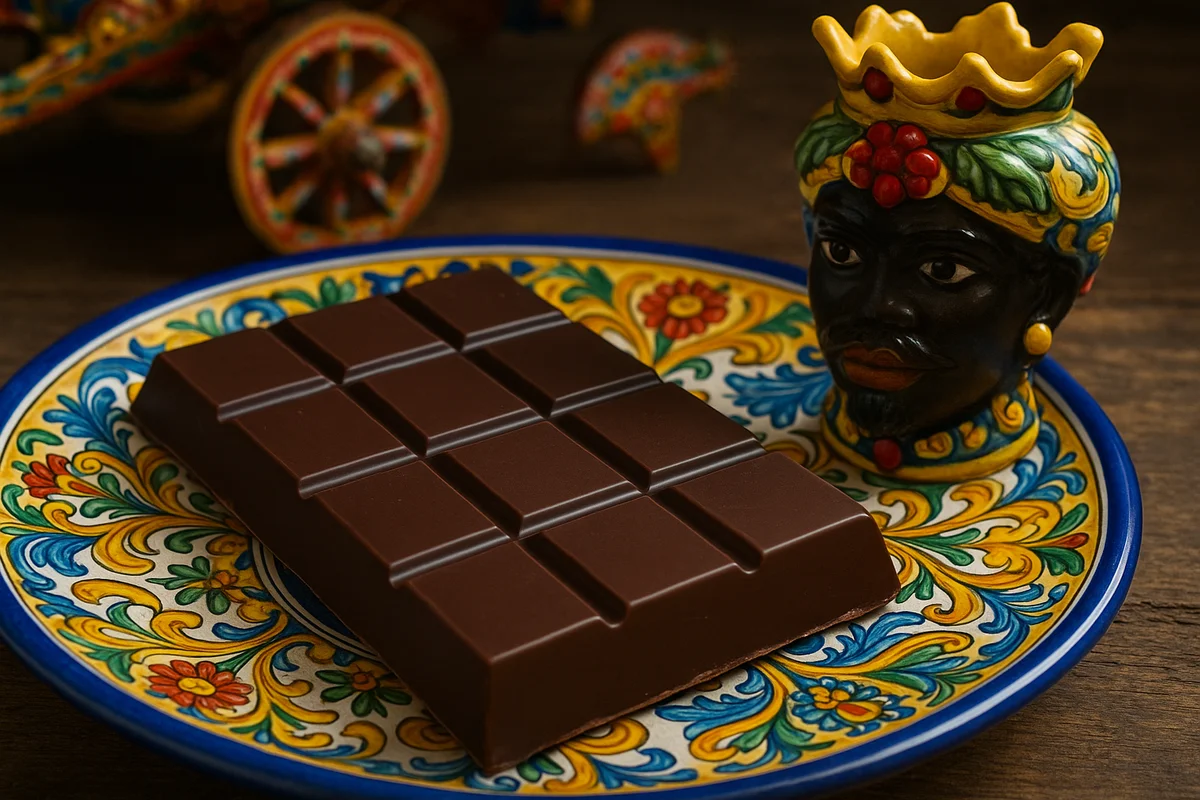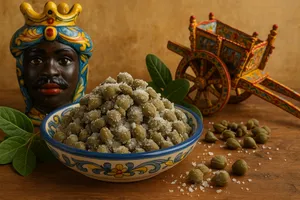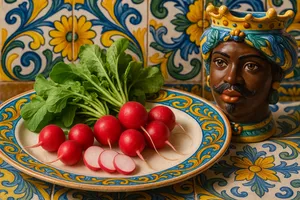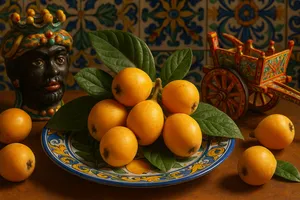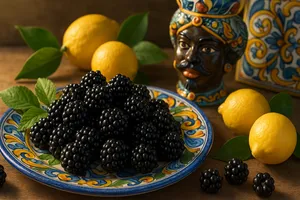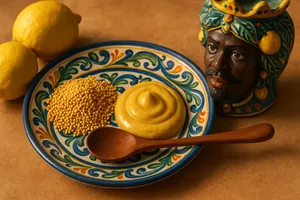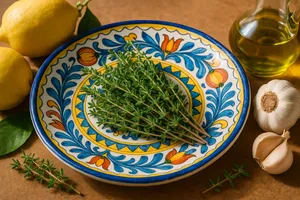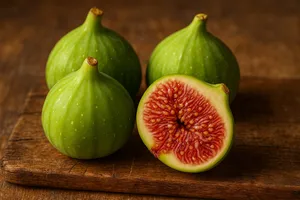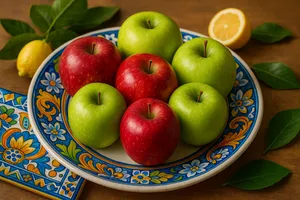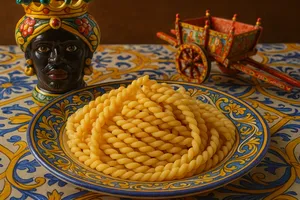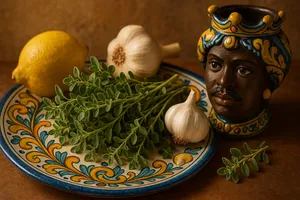Overview
Chocolate, called “cicculatta” in Sicilian, is a fundamental ingredient in Sicilian pastry, introduced to the island through Spanish rule in the sixteenth century and swiftly woven into the local confectionery tradition. This product derived from cacao beans found a fertile home in Sicily, giving rise to unique preparations that blend European chocolate-making traditions with the creativity and flair of Sicilian pastry.
In the island’s culinary heritage, chocolate plays a starring role in iconic sweets such as cannoli, where chocolate chips stud the creamy ricotta, cassata with its decorations of dark chocolate, and numerous other preparations ranging from convent pastries to popular sweets. The artisanal chocolate of Modica, still made using the ancient cold-processing technique of the Aztecs, represents a singularity in the Italian chocolate tradition and has become a protected and celebrated gastronomic treasure.
Characteristics
Chocolate appears in various forms: bars, chips, shavings, coatings and cocoa powder. Its colour ranges from the light brown of milk chocolate to the deep, intense brown of dark chocolate, and to the ivory-white hue of white chocolate. Its texture depends on temperature: solid at room temperature, melting in the mouth or when warmed.
The flavour varies greatly depending on the type: dark chocolate has intense, bitter notes; milk chocolate is sweeter and creamier; white chocolate is very sweet with no bitter notes. Its aroma is intense, enveloping and characteristic of roasted cacao, with nuances depending on the origin of the beans and the processing.
The quality of chocolate is assessed by its cocoa percentage, its shine, the clean, crisp snap when broken, the absence of whitish bloom, and its balanced flavour without off-notes.
Types
Dark chocolate
Made of cocoa mass, cocoa butter and sugar, with cocoa percentages ranging from 50% to over 90%. The higher the percentage, the more intense and bitter the flavour. It is the chocolate most used in traditional Sicilian pastry for decorations and glazes.
Milk chocolate
Contains the same ingredients as dark chocolate plus milk powder or condensed milk. It has a lower cocoa percentage (minimum 25%) and a sweeter, creamier flavour. Used for decorations and direct consumption.
White chocolate
Made from cocoa butter, sugar and milk, without cocoa mass. It has an ivory-white colour and a very sweet, delicate flavour. Less common in traditional Sicilian pastry but used in modern creations.
Modica chocolate PGI
A traditional Sicilian chocolate produced using the ancient Aztec cold-processing technique. It has a characteristic grainy texture because the sugar does not fully melt. Flavoured with vanilla, cinnamon, chilli pepper or citrus. It is a unique product recognised as PGI.
Cocoa powder
Obtained by grinding cacao beans after extracting the cocoa butter. It can be unsweetened (natural) or sweetened. Used in sweet preparations, drinks and as a dusting for desserts.
Use in Sicilian pastry
Chocolate takes centre stage in countless Sicilian pastry preparations.
Sicilian cannoli
Dark chocolate chips mixed with ricotta are a defining element of cannolo filling. Some versions also dip the ends of the shell in chocolate with pistachio grains.
Cassata siciliana
Dark chocolate is used to create decorative swirls on the white glaze, giving cassata its characteristic baroque appearance. Some recipes also include chocolate shavings in the sponge cake.
Chocolate gelo
A chilled chocolate pudding made with unsweetened cocoa, sugar, starch and milk, scented with cinnamon. Served cold with candied jasmine and pistachios. A traditional summer dessert.
Chocolate biscuits
Numerous Sicilian biscuits use chocolate: glazed mustazzoli, Modica chocolate biscuits, Lenten biscuits with cocoa, and tetù with chocolate chips.
Modica chocolate
An artisanal product worked cold, retaining the graininess of the sugar. Traditionally flavoured with vanilla or cinnamon, today also with citrus, chilli pepper and sea salt. Eaten in pieces or used in pastry.
Impanatigghi
Typical sweets from Modica and Ragusa: shortcrust pastries filled with a mixture of almonds, chocolate, minced beef and spices. A unique preparation blending sweet and savoury.
Nucatoli
Filled biscuits typical of the Ragusa area, with a filling of almonds, chocolate, dried figs and honey. Chocolate adds depth to the spiced mixture.
Preparation and processing
Chocolate should be stored at room temperature (16–20°C) and melted gently for use. To melt it correctly, a bain-marie may be used, keeping the water below boiling and stirring frequently, or using a microwave on low power in short intervals.
Melting temperatures vary: dark chocolate melts at 50–55°C, milk chocolate at 45–50°C, and white chocolate at 40–45°C. It is important not to overheat chocolate, which can burn and become grainy and dull.
To obtain glossy, crisp tempered chocolate (for decorations and coatings), the tempering technique is used: controlled melting, cooling and reheating to stabilise the cocoa butter crystals.
Chocolate chips for cannoli are obtained by mixing finely chopped dark chocolate into ricotta. For liquid decorations, melted chocolate is placed in a parchment-paper cone.
Storage
Chocolate should be stored in a cool, dry place at a constant temperature between 16–20°C, away from light, humidity and strong odours that it easily absorbs. It should never be stored in the refrigerator because temperature changes create condensation that leads to whitish bloom (fat or sugar bloom).
If stored correctly, dark chocolate keeps for up to 2 years, milk chocolate for 1 year and white chocolate for 8–10 months. Cocoa powder keeps in an airtight container for 1–2 years.
Bloom on the surface does not affect edibility but only appearance. Bloomed chocolate can be melted and used in cooked preparations where appearance is not essential.
Tips for buying
When buying chocolate, read the label carefully to check cocoa percentage and ingredients. Quality chocolate contains only cocoa mass, cocoa butter and sugar (plus milk for milk chocolate), with no vegetable fats other than cocoa butter.
Ensure the surface is glossy and even, without white spots or dullness. Chocolate should break with a clean, crisp sound. Choose chocolate in bars or blocks rather than pre-shaped products when seeking high quality.
For traditional Sicilian pastry, choose dark chocolate with a cocoa percentage of 60–70% for a good balance between intensity and sweetness. For Modica chocolate PGI, buy from certified artisanal producers in the area.
Nutritional properties
Chocolate is an energy-dense food: 100 grams of dark chocolate provide about 500–550 calories, milk chocolate about 530–560 calories. It is rich in fat (30–40 grams per 100 grams), mainly saturated fat from cocoa butter, and carbohydrates (40–60 grams per 100 grams) mostly in the form of sugars.
It contains modest amounts of protein (5–8 grams per 100 grams). Dark chocolate is rich in antioxidants, particularly flavonoids, which have beneficial properties for the cardiovascular system. It also contains theobromine and caffeine, stimulating substances in small quantities.
It is a good source of minerals such as magnesium, iron, copper and manganese. It contains tryptophan, a precursor of serotonin, which can improve mood. It should be consumed in moderation due to its high calorie and saturated fat content.
Dark chocolate with a high cocoa percentage has better nutritional properties than milk chocolate, with more antioxidants and less sugar.
Curiosities
Chocolate arrived in Sicily through Spanish rule in the sixteenth century. Sicilian monasteries and convents, especially female ones, were the first to develop the art of chocolate-making, creating refined sweets that combined Spanish chocolate tradition with local ingredients and techniques.
Modica chocolate represents a singularity in Italian chocolate production. The cold-processing technique, learned by the Spanish from the Aztecs and brought to Sicily, has remained unchanged through the centuries only in Modica. The result is a chocolate with a unique grainy texture where the sugar retains its crystalline structure.
In the eighteenth century, Palermo had numerous “chocolate maker’s shops” where spiced hot chocolate was prepared, a luxury beverage enjoyed by the Sicilian aristocracy. Recipes included cinnamon, vanilla, amber and occasionally black pepper.
During Sicilian patron saint festivals, it is tradition to give chocolates and chocolate sweets as gifts. In Modica, during the feast of Saint George, chocolate sculptures representing the patron saint are made and distributed to the faithful.
The impanatigghi, a Ragusan sweet combining chocolate and meat, testifies to the influence of Spanish baroque cuisine in Sicily, where the mix of sweet and savoury was highly appreciated in noble courts.

